Quick Start Guide
305 EQ/MIXER/OUTPUT
Legendary Analog Parametric EQ,
Mixer and Output Module for Eurorack
Controls
(1) MIXER INPUTS (1 / 2 / 3 / 4) – Use these jacks to route
audio signals into the OUTPUT MIXER section via cables
with 3.5 mm connectors. Channel 1 includes a pre-wired,
normalled connection from the parametric EQ section, so
the PARAMETRIC EQ output can directly enter the Channel
1 signal path just before the volume slider. If a 3.5 mm
connector is inserted into the MIXER INPUT 1 jack, the EQ
output is disconnected and replaced by the incoming jack
signal from MIXER INPUT 1.
(2) VOLUME SLIDERS – Use these sliders for independent
volume control of each input channel.
(3) PANPOT – These knobs control each channel’s placement
in the stereo eld.
(4) LEVEL (1 / 2 / 3 / 4) – Use these knobs to cut or boost each
of the PARAMETRIC EQ’s four frequency bands.
(5) BANDWIDTH – These knobs control the width or
narrowness of the parabolic lter curve for each frequency
band. Higher values narrow the curve, while lower values
produce a wider, gentler parabolic curve.
(6) FREQUENCY – Use these knobs to adjust the placement
of each EQ lter around the center value shown just above
the knob.
(7) IN – Use this input to route external signals into
the PARAMETRIC EQ section via cables with 3.5 mm
connectors. The IN jack’s associated signal and clip LEDs
read the input signal level when BYP is selected on the
EQ/BYP sliding switch. When EQ is selected on the EQ/BYP
sliding switch, the LEDs read the EQ output level.
(1)
(2)
(3)
(7)
(4)
(5)
(6)
(8)
(9)
(14)
(15)
(12)(13)(11)
(10)
V 1.0
(8) EQ/BYP – This sliding switch turns the PARAMETRIC EQ
circuit on or o. When the switch is in the BYP position,
and the EQ circuit is inactive, the signal coming in through
the IN jack will be passed through unaltered to the
Channel 1 mixer channel.
(9) EQ OUT (1 / 2) – Use these parallel output jacks to send
the PARAMETRIC EQ section’s processed signal out for use
elsewhere via cables with 3.5 mm connector. When the
EQ/BYP switch is in the BYP (bypassed) position, the signal
coming in through the IN jack will be duplicated at the EQ
OUT outputs.
(10) MIX LEVEL – Use this knob to adjust the volume of the
STANDARD OSC output before the adjusted signal is then
sent to the headphone LEVEL control and the nal MASTER
VOLUME control.
(11) FREQ (OFF / 220 / 440 / 880) – This sliding switch turns
the onboard oscillator (STANDARD OSC) on or o and
chooses the oscillator’s frequency. The oscillator’s output
goes to the OUTPUT MIXER section as a pre-wired parallel
connection, like an additional fth mono channel, that
is blended into the mixer section’s output using the MIX
LEVEL control.
(12) MASTER VOLUME – Use this knob to make nal level
adjustments before the mix goes to the MASTER OUTPUTS.
(13) MASTER OUTPUTS – Use these outputs to send out the
nal mix via separate left and right jacks via cables with
either 3.5 mm or ¼” connectors. For a single mono output,
use only the output labeled L/MONO.
(14) LEVEL (PHONES) – Use this knob to control the volume
level for the PHONES output.
(15) PHONES – This output sends out the nal mix for
headphones with a 1/8” stereo connector.
Power Connection
The 305 EQ/MIXER/OUTPUT module comes with the required
power cable for connecting to a standard Eurorack power supply
system. Follow these steps to connect power to the module. It
is easier to make these connections before the module has been
mounted into a rack case.
1. Turn the power supply or rack case power o and
disconnect the power cable.
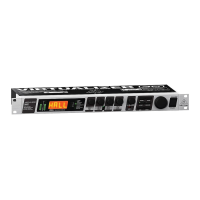
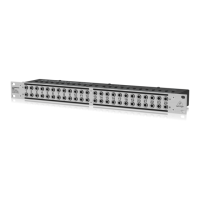
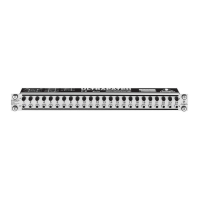


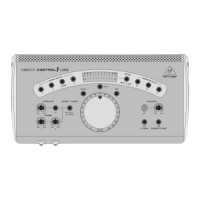
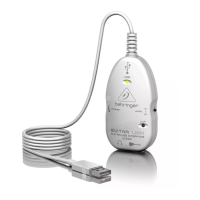
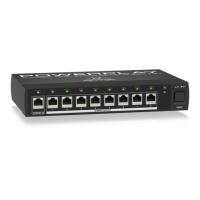
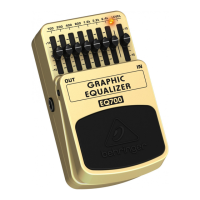
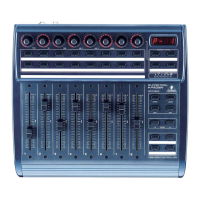

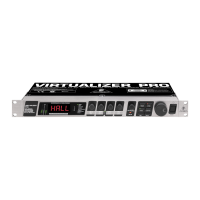
